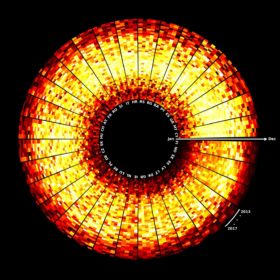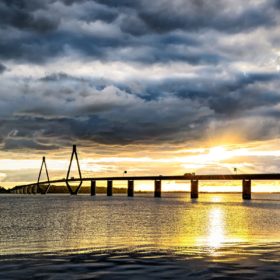Danish researchers bring some color to rooftop PV
Scientists led by the Technical University of Denmark have begun a project to design solar cells that can be produced in different colors with minimal effect on performance, making them suitable for building-integrated and other applications with aesthetic considerations.
A worldwide, open source model for solar performance
Researchers at Denmark’s Aarhus University have created a modelling tool which they say, by taking into account weather data and the historical performance of PV installations, can precisely predict the output of a solar plant at any location. The tool, say the academics, will help with the planning of new installations and the integration of PV into energy systems.
New Danish government roadmap displays climate ambition
Joining the growing club of European countries setting carbon neutrality deadlines, new Danish PM Mette Frederiksen has announced her administration will look at reducing greenhouse gas emissions by 70% by 2030.
MW-sized solar park for 100% self-consumption in Denmark
A 4.8 MW solar park, which is being built by Danish developer Better Energy, will cover 20% of total power demand of a new hospital complex in Odense. The energy produced by the plant will be 100% self-consumed.
Is Denmark ready for solar PPAs?
After a power purchase agreement for a 125 MW solar project was announced in February, similar deals appear to be cropping up. Danish PV analysts, however, warn of the potential risks of such a model and say the green commitments of big electricity consumers may not be enough to spur growth in the segment.
CIP raises $700m in first close of new renewables fund
Copenhagen Infrastructure Partners’ new fund, CIP New Markets Fund I K/S, will invest in renewable energy infrastructure, including solar, in countries throughout Latin America and Asia.
Ikea tests rooftop PV and blockchain on miniature wooden village
The Solarville project, by Ikea’s Danish research and design laboratory, has seen the participation of blockchain companies such as Bloc, Blocktech, WeMoveIdeas India and Temporal. It was conceived to help create cooperative community micro-grids to enable homeowners to become clean energy traders.
Unlocking Scandi-candy for PV projects in developing countries
A new report suggests that better guarantee mechanisms and securities could unlock more investments from Scandinavia for renewable energy projects in developing countries. Overall, however, it finds that Norway, Sweden and Denmark have comprehensive mechanisms in place for bringing together industry and public support schemes.
Denmark’s wind-solar auction ends with average premium tariff of €0.0031/kWh, and almost 40% of capacity assigned to solar
Although wind power had the largest share with 165 MW of capacity, solar was able to secure the same number of projects and a total capacity of 104 MW. The Danish Energy Agency had received 17 bids, including 280 MW of solar projects.
Google seeks green PPA for its new data center in Denmark
The Internet giant began construction on what will be its fifth datacenter in Europe. The €600 million facility will be powered exclusively by clean energy sources, the company said.










